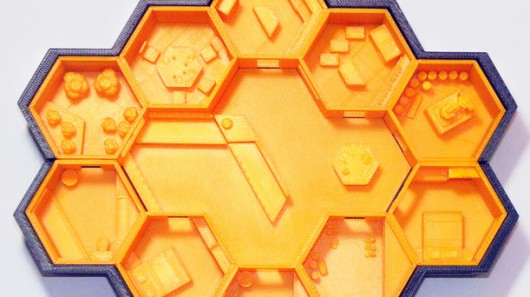
If humans successfully colonize Mars in the future, what kind of homes will they inhabit? NASA and MakerBot recently hosted a competition which tasked people with making a 3D-printed model home suitable for the Red Planet. Noah Hornberger won with his Queen B (Bioshielding) concept home, which offers food-for-thought concerning the future of interplanetary architecture.
via Gizmag
Image: Noah Hornberger






